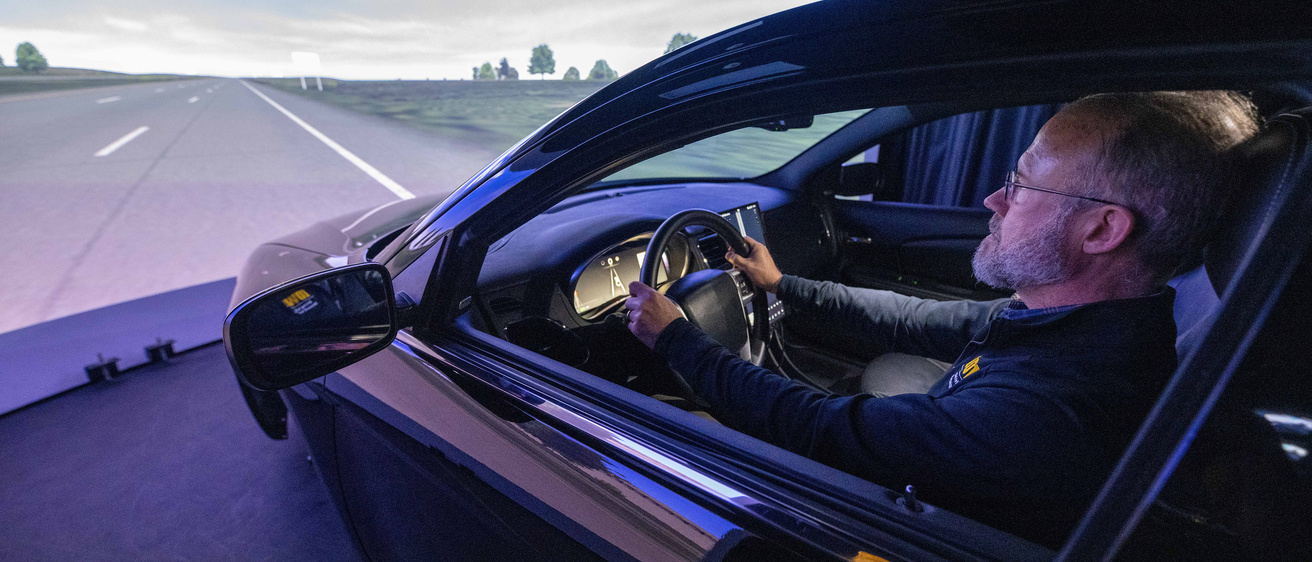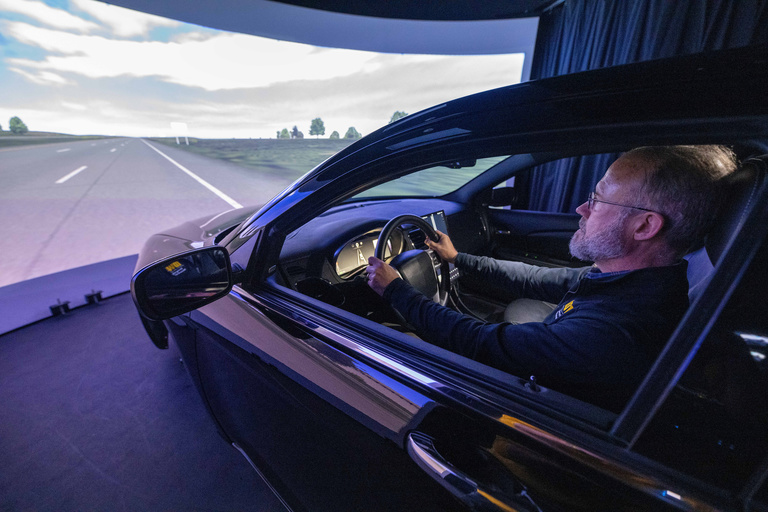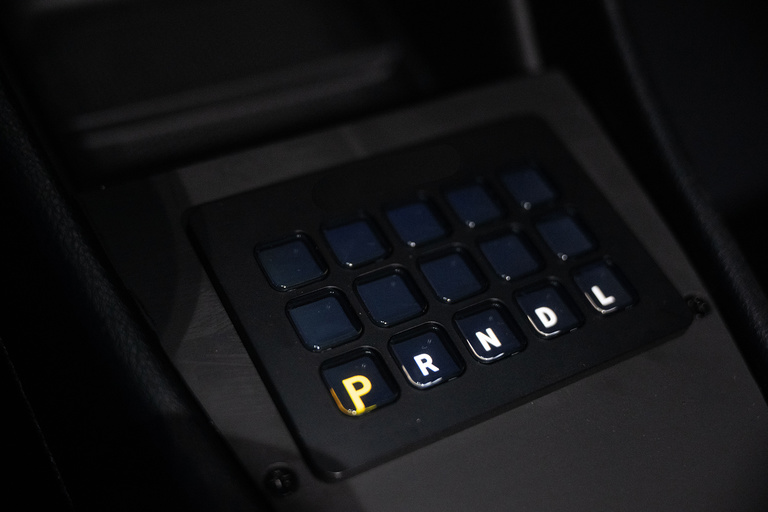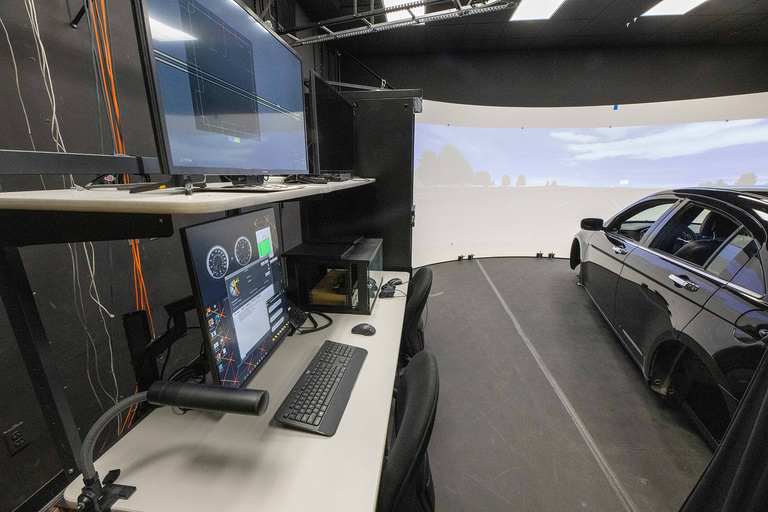In a multi-year project to connect the NADS-1 and NADS-2 simulators in the same virtual environment, the DSRI team upgraded the hardware and vehicle cab of the NADS-2 simulator. A new full cab is in the NADS-2 space, with a motion base for the cab that uses the miniSim architecture.
On the software side, software engineers Christian Bauer and Oscar Hernandez-Murcia updated the software infrastructure to sync up the miniSim and NADS-1 systems, which allows multiple drivers to interact in the same simulation. Testing has also focused on using the Unreal Engine for graphics rendering. Chris Schwarz, director of engineering and modeling research, is leading the effort to create the technology road map and identify necessary upgrades to legacy hardware and software that will keep NADS-1 up to date and improve interoperability between NADS-1 and miniSim as well as between miniSims.
All of these upgrades will support an upcoming study looking at roadway interactions between human-driven vehicles and varying levels of automated vehicles. The study is funded by NHTSA and titled Human Interactions with Driving Automation Systems (HIDAS).
This study will have a driver in each simulator interacting with one another, each with a different level of automation (manual, partial, or high), and those combinations will vary to see how they interact in that shared virtual space. The types of planned interactions will be informed by common problem scenarios for automated vehicles identified through simulation-based testing and collected into scenario databases.
“It’s something that’s never been done, to understand the interactions that happen between traffic when you get different levels of automation and the effect on surrounding drivers. To do that, we need to have multiple people drive in the same virtual space,” explained John Gaspar, director of human factors research.




